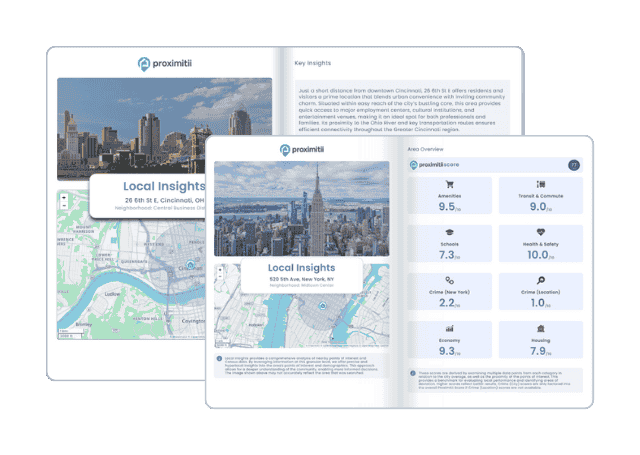

 Health & Safety
Health & Safety
Accessible health facilities like hospitals, doctors offices, clinics and nursing homes as well as good air quality are all factors that have led to a high score in this category.
 Amenities
Amenities
The majority of amenities will be difficult to reach within a short walk, often requiring residents to use a vehicle or public transportation for access.
 Commute
Commute
Low commute scores could be due to limited access to public transit in this area, as well as longer-than-average work commute times for residents.
 Employment
Employment
This area earns a low score in the employment category due to low household income levels and high unemployment rates, which may pose challenges in seeking job opportunities.
 Schools
Schools
The low schools score might be a result of factors like lower than average education levels, lackluster reading and math scores and the inaccessibility of local elementary and high schools.

Why stop at city-to-city? With Local Insights, you can compare neighborhoods, zip codes, or even exact addresses. Access 300+ hyperlocal data points—from schools and crime to housing and amenities—to see which area is the better fit.

| Statistic | Shippensburg University | Pennsylvania | National |
| Average one way commute | 15min | 26min | 26min |
| Workers who drive to work | 38.4% | 76.5% | 76.4% |
| Workers who carpool | 7.0% | 8.5% | 9.3% |
| Workers who take public transit | 0.0% | 5.6% | 5.1% |
| Workers who bicycle | 0.0% | 0.5% | 0.6% |
| Workers who walk | 38.6% | 3.8% | 2.8% |
| Working from home | 16.0% | 4.2% | 4.6% |